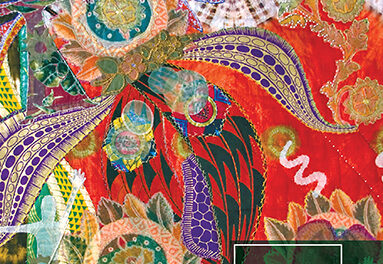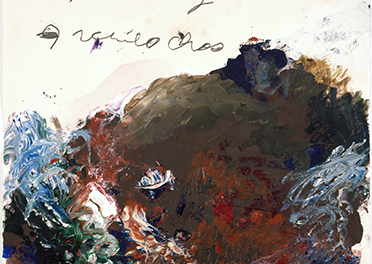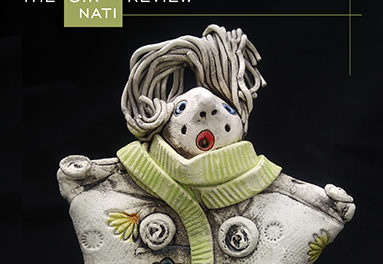Welcome back to the CR dance-party the hipster kids are calling Pas de Deux, our two-part interview exchange between recent contributors. In this encounter, Bruce Snider asks fellow poet and 11.1 contributor Carl Phillips how his poem “Hold Tight” transitioned from a squiggle on a bev-nap to the polished tour de force we’re proud to feature in our pages. Read on to discover what Phillips thinks about repurposing the sonnet form, juxtaposing different grammatical moods within a single sentence, and the pitfalls of memory.
 Bruce Snider: One of the first things I noticed about this poem is that it looks like a sonnet and is, in fact, fourteen lines. Something about the sonnet’s demands for compression often gives it a “gripped” quality, almost fist-like, which seems especially apt for a poem called “Hold Tight.” Your looser interpretation of the form (no iambic pentameter or strict rhyme scheme), however, also seems fitting, since the poem’s content quickly sets “holding tight” against the notion of “letting go.” It seems to me that the poem’s form does both at once. Do you think of “Hold Tight” as a sonnet, or at least intend for it to gesture toward the form and its traditions?
Bruce Snider: One of the first things I noticed about this poem is that it looks like a sonnet and is, in fact, fourteen lines. Something about the sonnet’s demands for compression often gives it a “gripped” quality, almost fist-like, which seems especially apt for a poem called “Hold Tight.” Your looser interpretation of the form (no iambic pentameter or strict rhyme scheme), however, also seems fitting, since the poem’s content quickly sets “holding tight” against the notion of “letting go.” It seems to me that the poem’s form does both at once. Do you think of “Hold Tight” as a sonnet, or at least intend for it to gesture toward the form and its traditions?
Carl Philips: I don’t know if I intended for the poem to gesture toward the sonnet and its traditions, but I agree with you that it seems to do so. For the last few years, I’ve noticed that so many of my poems have been between twelve and fifteen lines, so there seems to be something in me that wants to hover around that sonnet length—and I agree, it’s just the right length for setting up a kind of tension that can seem like release and restraint at the same time.
BS: Your poems are admired, among other things, for their complex, elongated sentences, and for the way you use lineation to emphasize and disrupt that syntax. Could you talk about your approach to these elements in “Hold Tight”? In particular, I’m curious about your use of an em dash in line 6 to join what could have been two separate sentences (the line could have been punctuated: “I forget to think about it. If I don’t think about it . . .”).
CP: Well, I don’t know if it’s worthy of being admired (!), but I have a fascination with the relationship possibilities between short and long sentences. Though not overly conscious of this when writing, I’m sure I was aware, by revision time, that this poem consisted of five sentences, one of which contains the poem’s only question—I like thinking about the mixing of grammatical moods, as well, a nerdy activity that has turned out to be useful for writing. . . . About that em dash, huh, good question. Maybe the dash is a way of rushing, a way to avoid the pause of a period, which would imply a moment to do the very thinking that the poem wants, anyway, to avoid. That’s how it reads to me, now. Again, though, none of this really occurs to me when I’m writing, it just sort of comes out that way.
 BS: There’s such a lovely balance between mind and body in “Hold Tight,” between abstract thinking and image, the sense of a mind actively working through the sensual particulars of the world. I especially admire how the imagery serves to both clarify and complicate that thinking. How consciously do you consider the relationship between abstract thought and concrete sensory language when composing?
BS: There’s such a lovely balance between mind and body in “Hold Tight,” between abstract thinking and image, the sense of a mind actively working through the sensual particulars of the world. I especially admire how the imagery serves to both clarify and complicate that thinking. How consciously do you consider the relationship between abstract thought and concrete sensory language when composing?
CP: You’ve probably figured out that I write pretty much intuitively, without a lot of thinking ahead—it’s as though, if I were to be overly aware of what I was doing, I’d be unable to do it. But having said that, I do know that I have a propensity for abstraction—I’m most interested in wrestling with the big unresolveable subjects, so things like love, death, sex are hard to steer clear of. And yet I also know how many poems address abstraction in ways that can be off-putting; they can sound like philosophical tomes instead of poems. . . . I’ve always been excited about the natural world. I spend a lot of time observing minute details in nature, and I think this has turned out to be an instinctive lens through which to consider abstraction. And it also suggests both a kinship to (or at least a desired one) and tension between the natural world of instinct and our human world of self-consciousness and abstraction. It’s probably related to how the Transcendentalists thought about the natural world, but that’s going back to tenth-grade English, for me, so I don’t trust my memory on that one.










